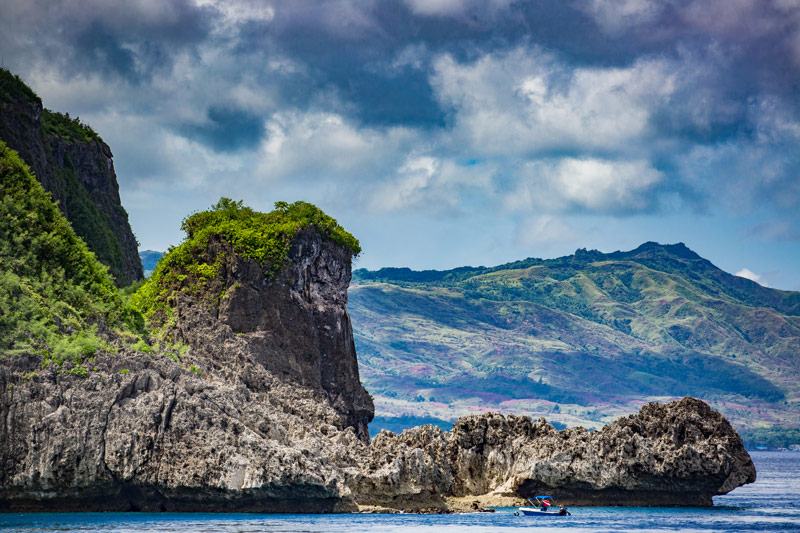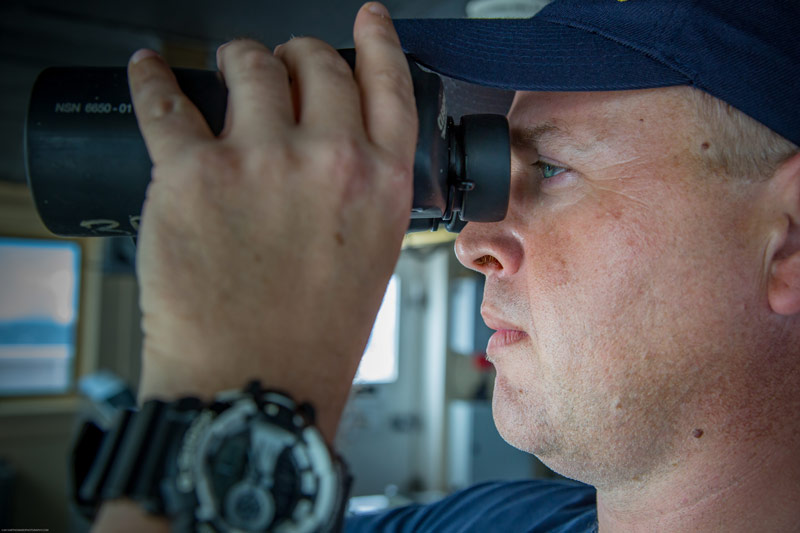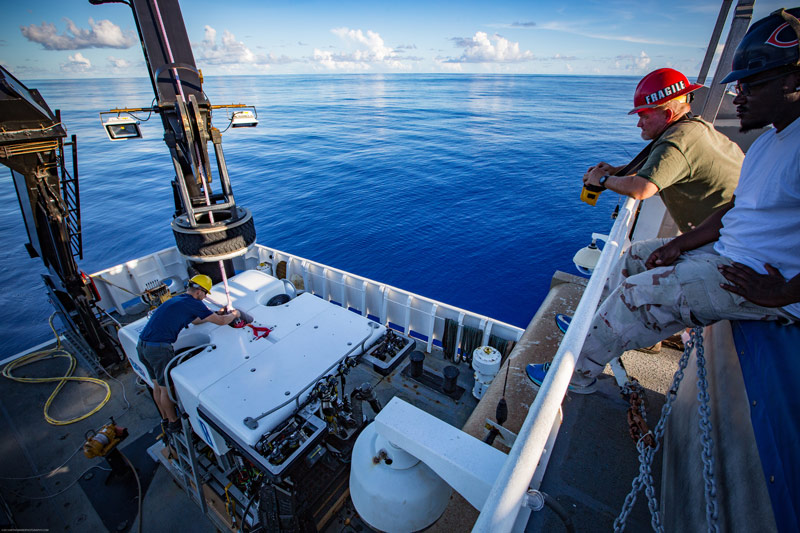
By LTJG Aaron Colohan, Operations Officer, NOAA Ship Okeanos Explorer
July 28, 2016

A view of Spanish Steps as the ship departs Guam. Image courtesy of the NOAA Office of Ocean Exploration and Research, Deepwater Wonders of Wake. Download larger version (jpg, 16.3 MB).
I am honored to serve in the NOAA Corps and aboard NOAA Ship Okeanos Explorer. I serve as the Operations Officer (OPS) here aboard ship and would like to give a brief description about my duties and my typical day at sea.
The Operations Officer serves in multiple roles aboard a sea-going vessel, and on a scientific research platform, those duties take on many different forms. In simple terms, I act as the conduit between the Ship’s Company and Scientific Party. Starting from the moment the scientists begin to arrive at the vessel, I work to facilitate the transition to the ship and acclimation with life at sea. I have to be aware of both the ship’s mission and its capabilities in order to balance the scientific data collection needs in concert with our ability to collect that data safely.

Operations Officer LTJG Aaron Colohan scans the horizon while on watch. Image courtesy of the NOAA Office of Ocean Exploration and Research, Deepwater Wonders of Wake. Download larger version (jpg, 10.7 MB).
As an operations officer, I am also directly involved with and supervise the ship’s Survey Department as well as provide mid-level leadership to newly transitioning ensigns aboard. As the most junior operations officer in the fleet, it was a privilege to be selected to go to the Okeanos Explorer early in my career with NOAA. That opportunity to teach others is an integral part of being an operations officer and garners you the experience needed to move throughout the fleet.
I have been with NOAA for five years, joining after earning my bachelor’s degree in anthropology and my master’s degree in environmental studies. Prior to that, I served for six years enlisted in the U.S. Navy as a SONAR technician, spending four years at sea on the USS Vincennes (CG-49). Those experiences have helped me greatly in my position as OPS and I look forward to continuing to learn from those around me.
At sea, a typical day for me starts around 0700 (depending on the bridge watch schedule) and the first order of business is to grab some chow. The safety meeting on the bridge occurs at 0745, followed quickly by remotely operated vehicle (ROV) deployment, which all of the bridge officers rotate through on a schedule that I provide. After deployment, I usually head to my office/stateroom to read emails as they come through. After I have caught up, I hit the gym for an hour or so (three days a week) and then roll into lunch.

The crew looks on as ROV engineer Chris Ritter attaches the pin securing ROV Deep Discoverer to the lift crane. Image courtesy of the NOAA Office of Ocean Exploration and Research, Deepwater Wonders of Wake. Download larger version (jpg, 18.3 MB).
My bridge watch typically begins at 1330, where I assume the Deck and Conn of the vessel while the ROV deployment is going on. At 1430, during my bridge watch, we hold the Operations meeting on the bridge. During this meeting, we discuss current operations as well as near-future operations that need to be taken into account as we move into the next day. At 1630, we commence operations by bringing the ROV on deck and getting the ship underway to begin mapping operations. Following my bridge watch at 1830, I will usually get the Plan of the Day for the next day squared away and posted, finish up any remaining work from earlier in the day, and get ready for an hour or two of down time before we do it all again the next day.
Serving at sea for my country makes me very proud, collecting scientific data for humankind makes me humble. The NOAA Corps and the Okeanos Explorer allow me to do both... it’s a great job!